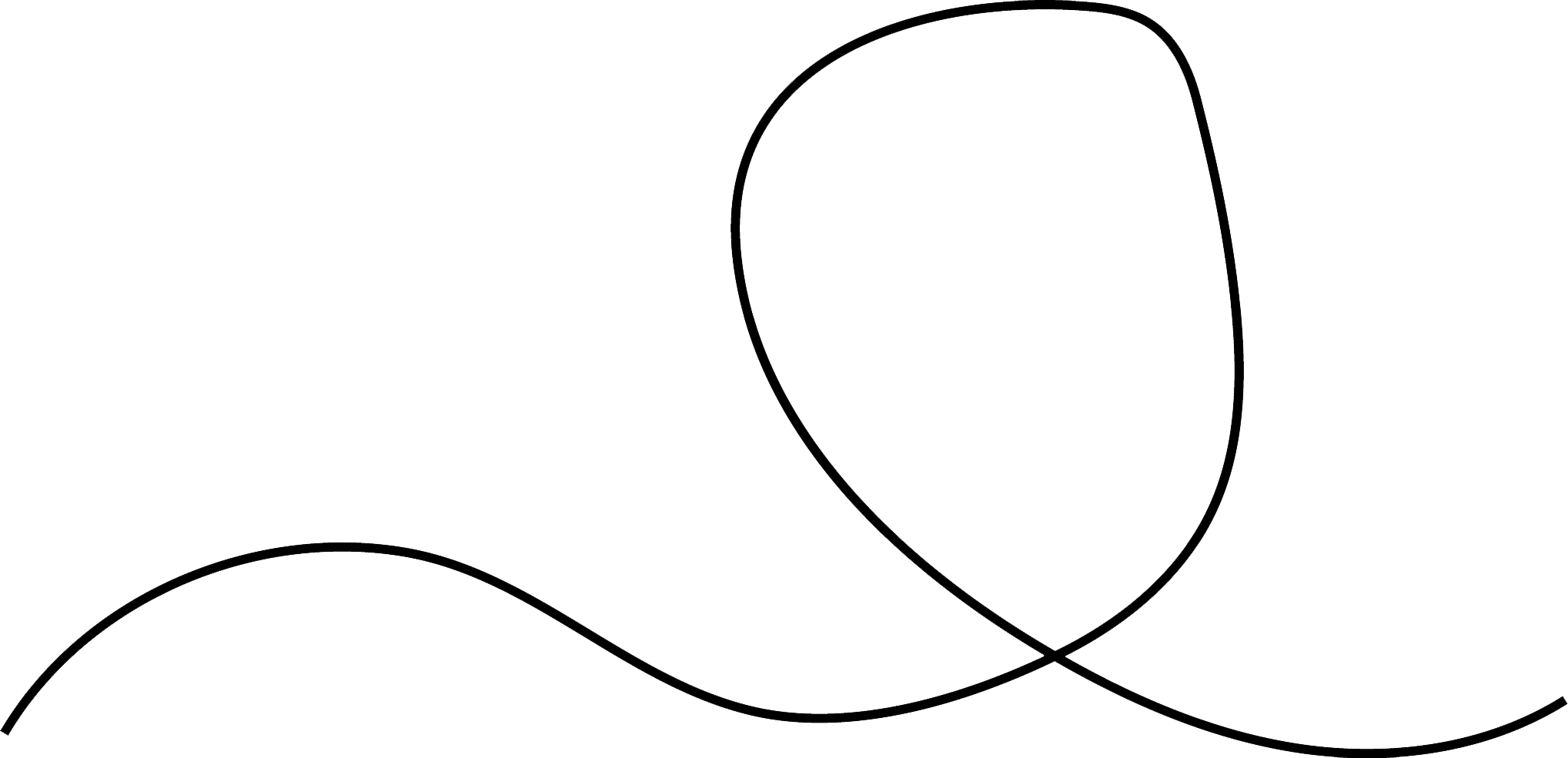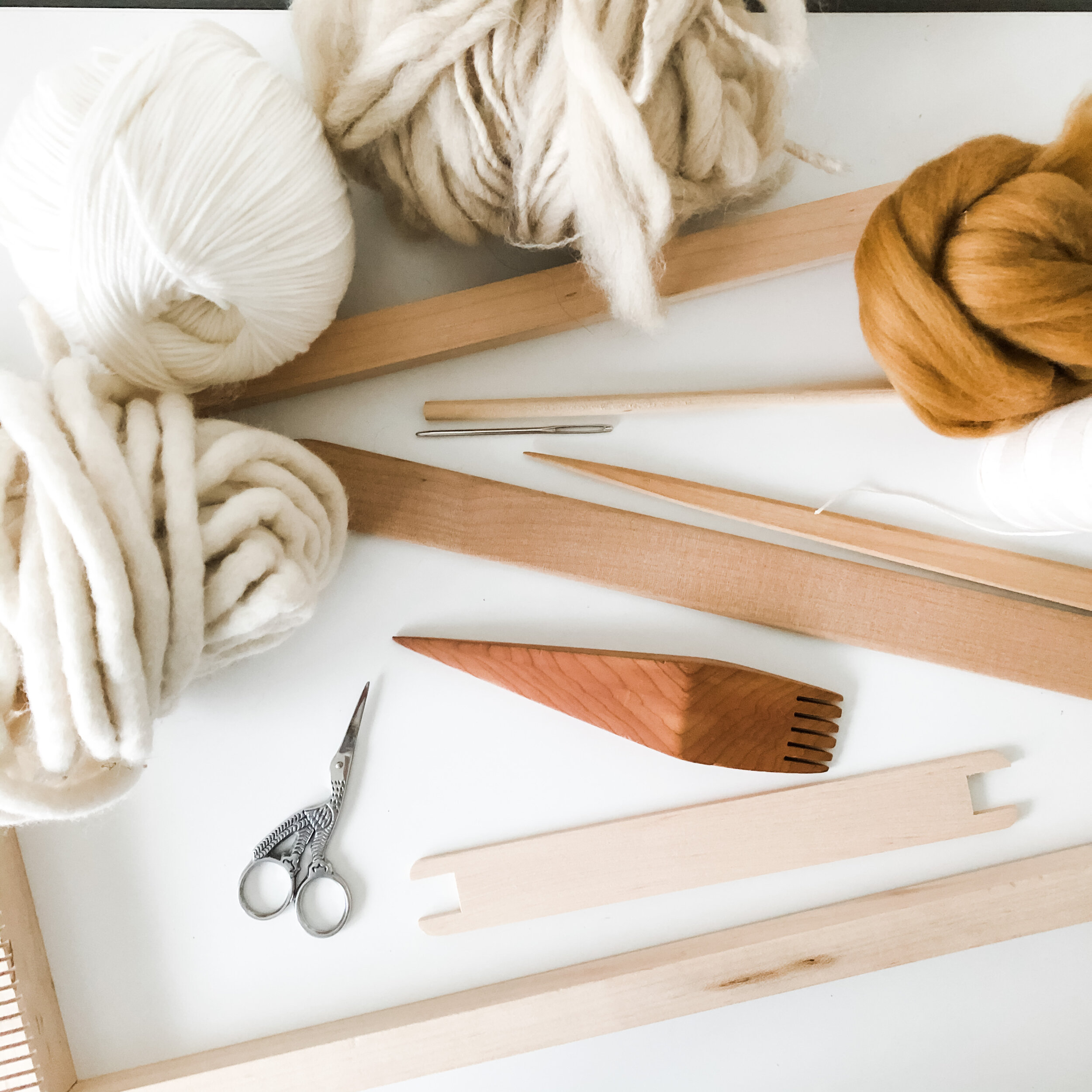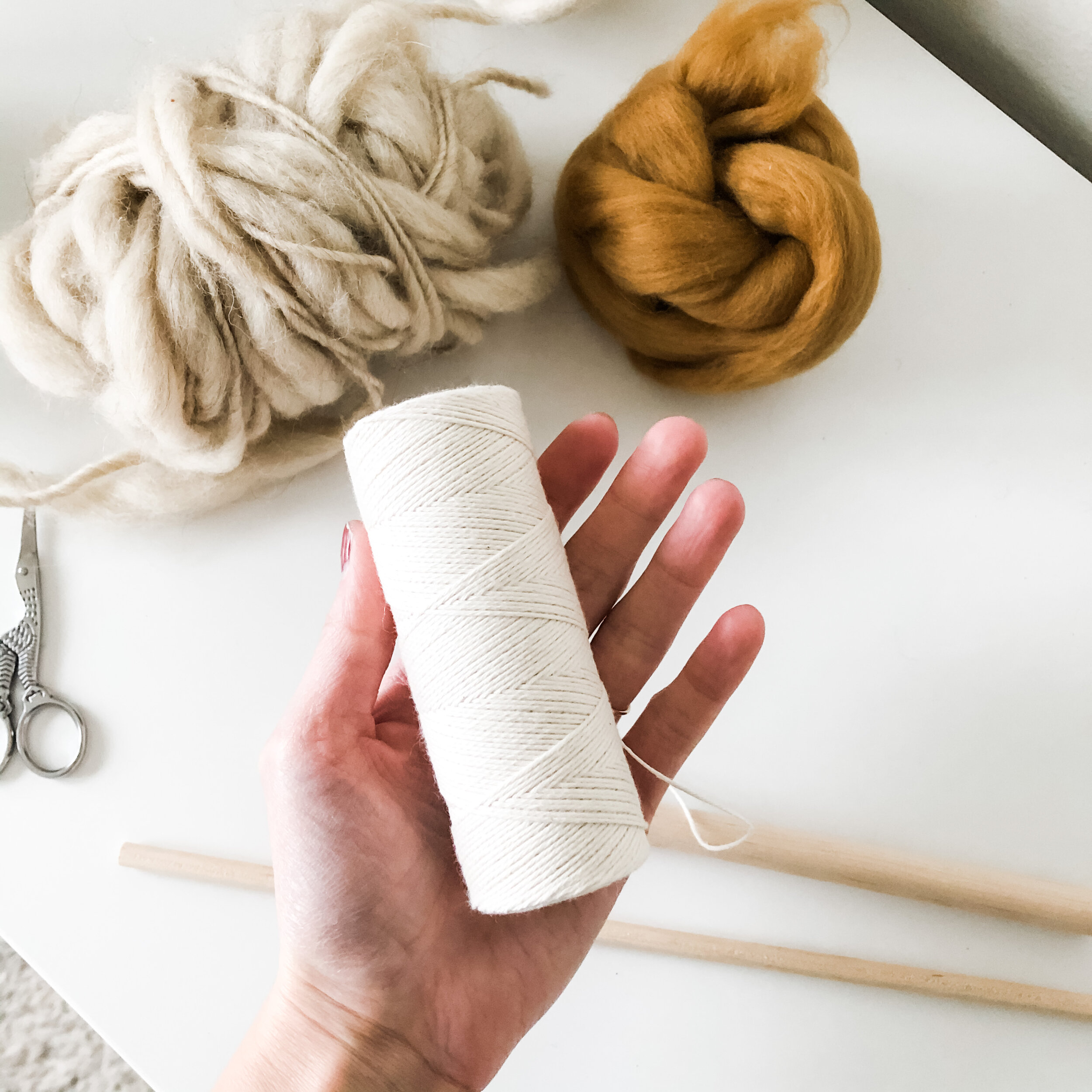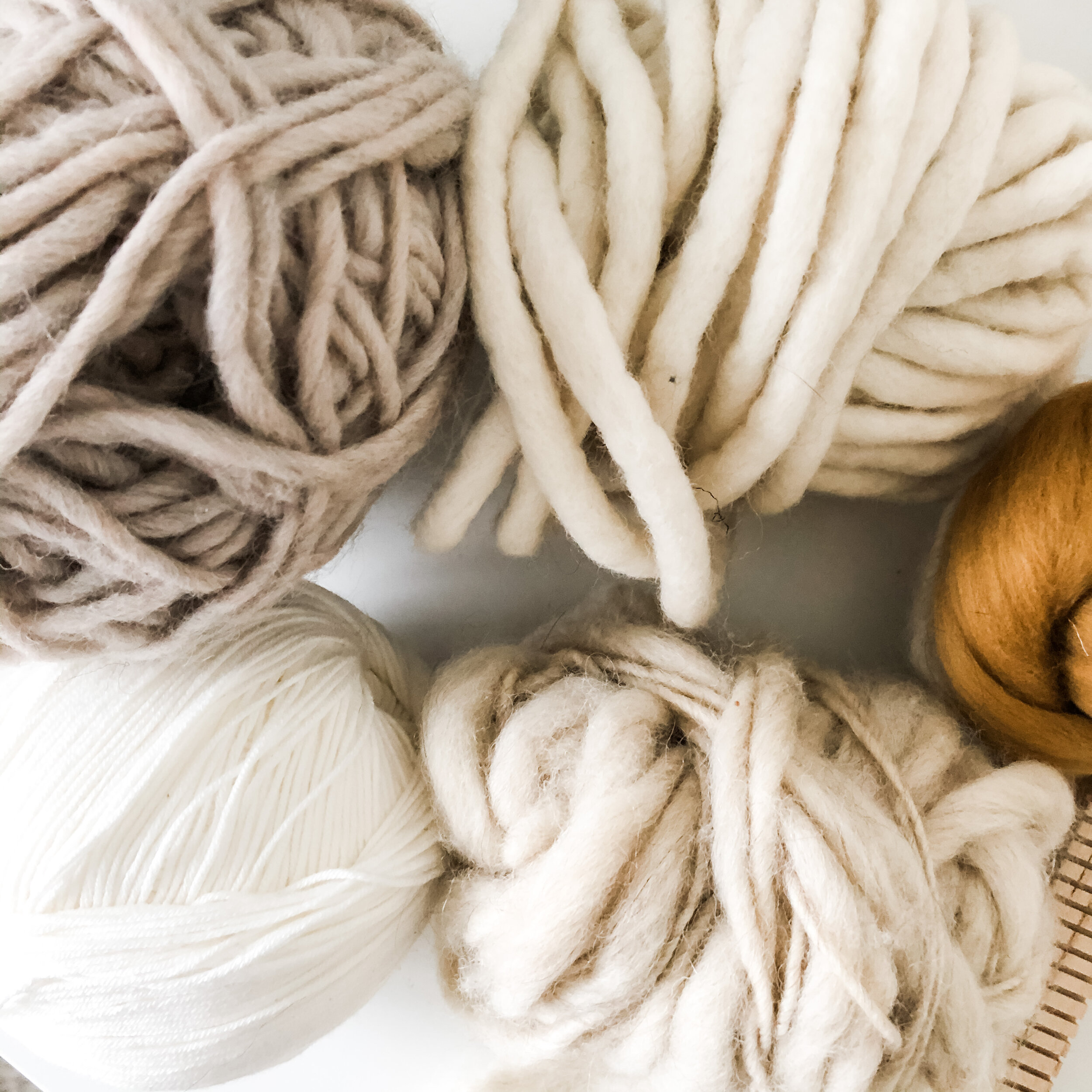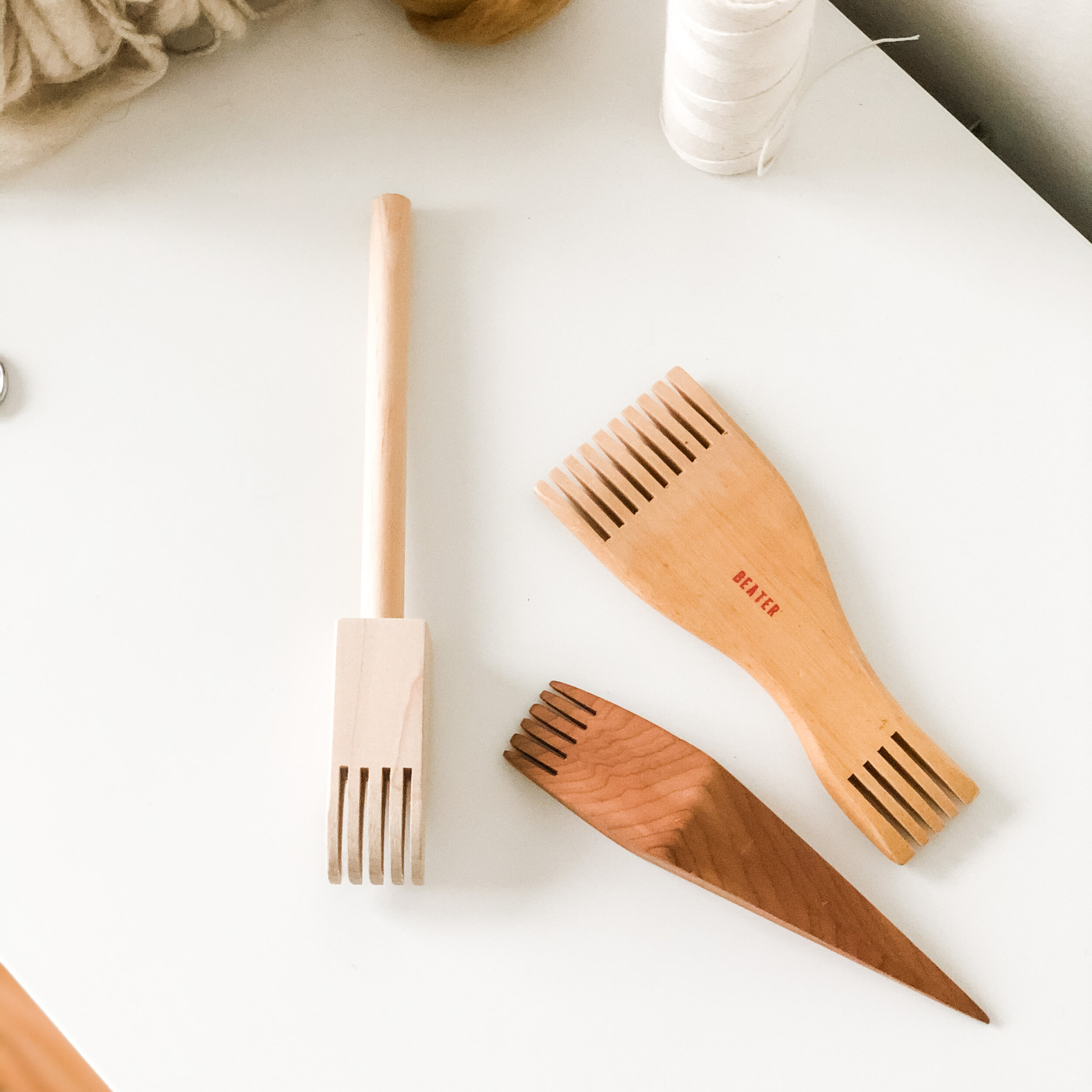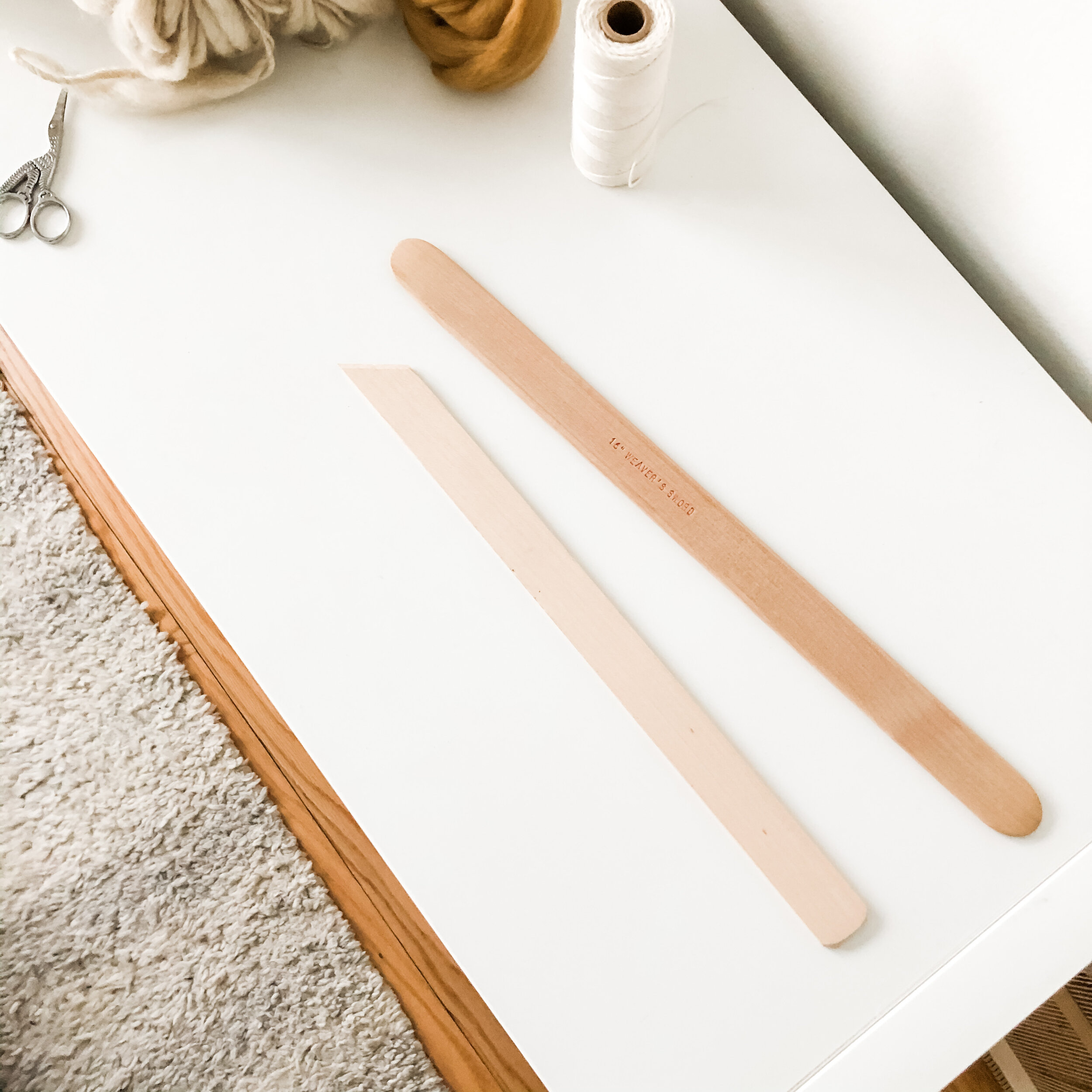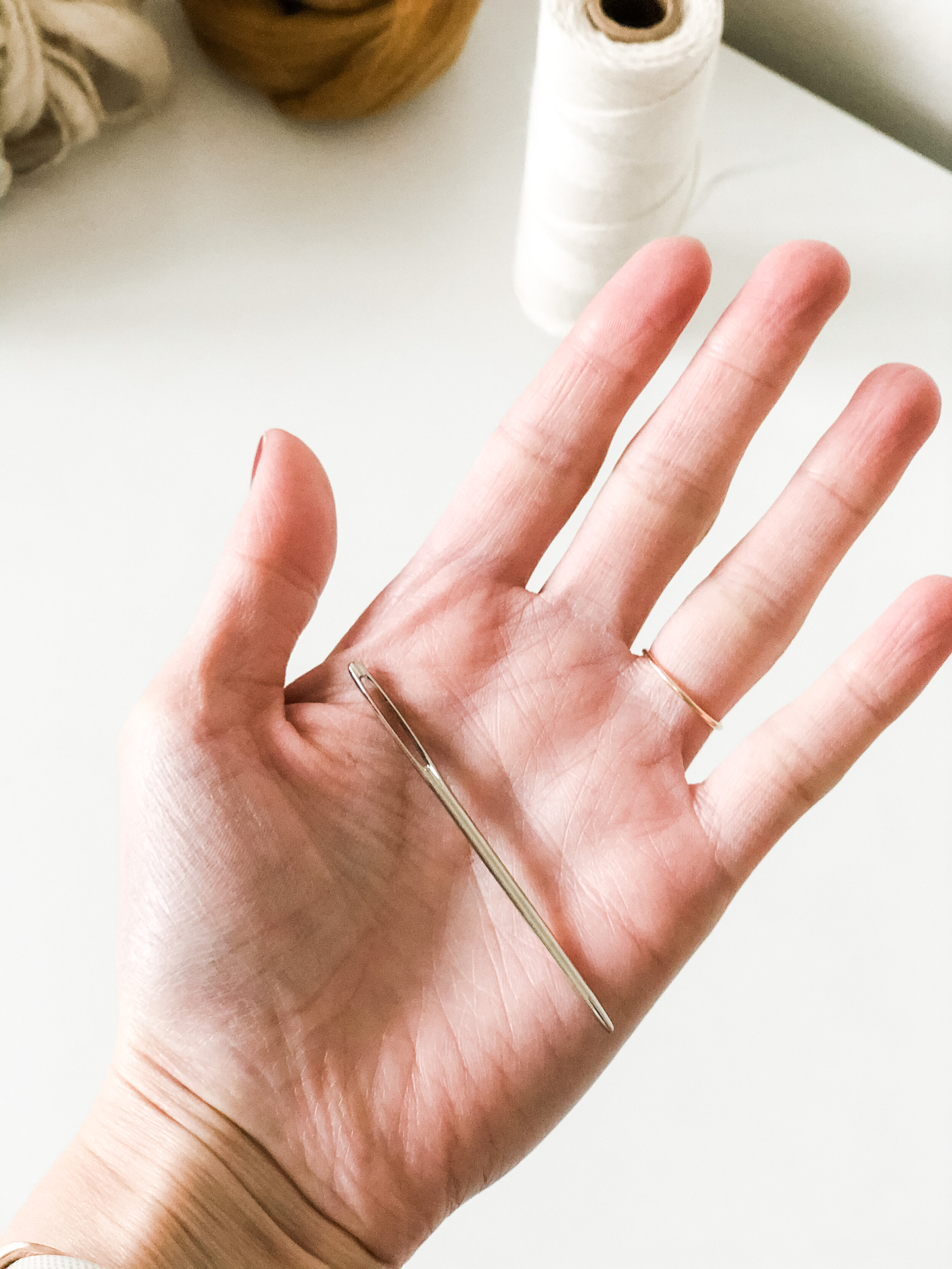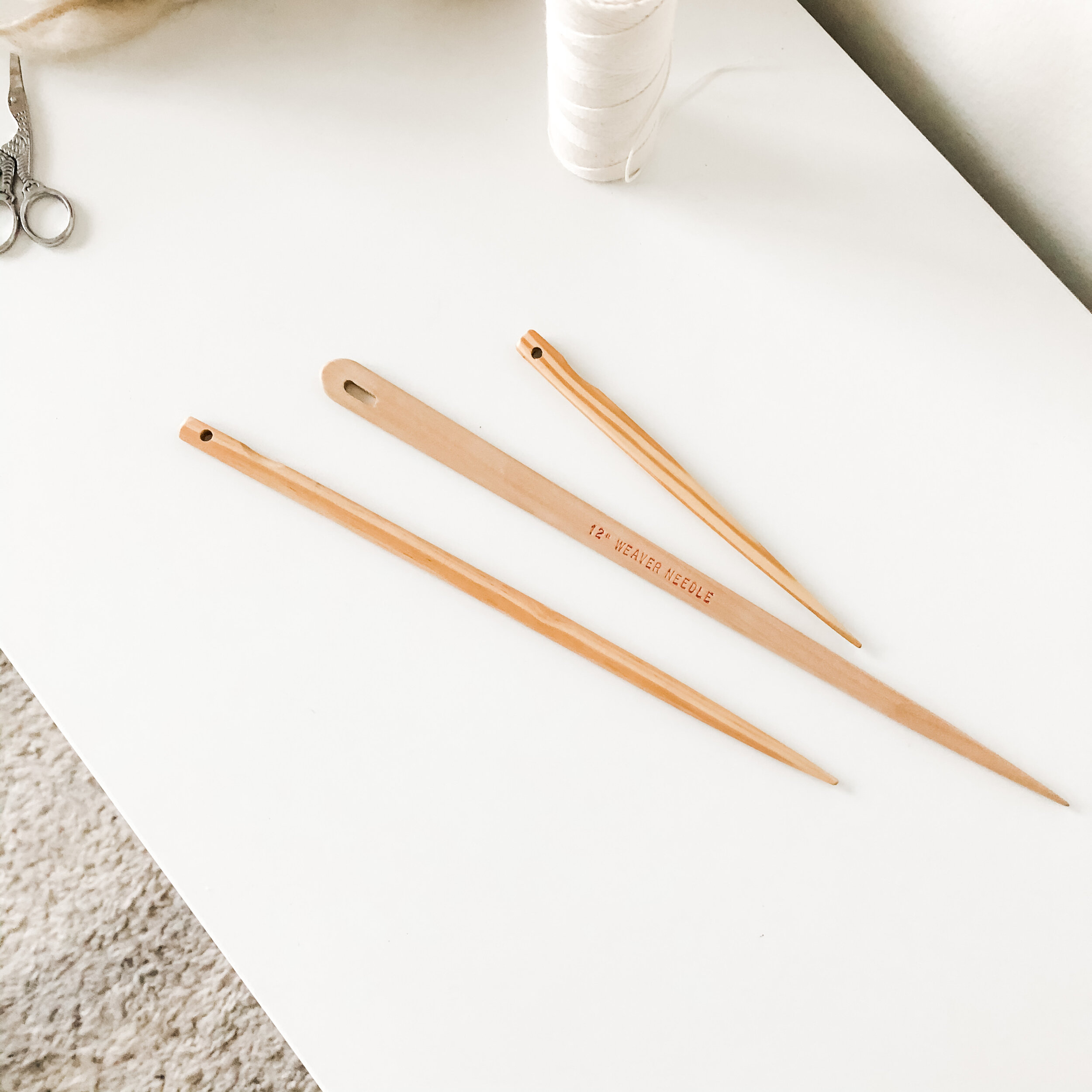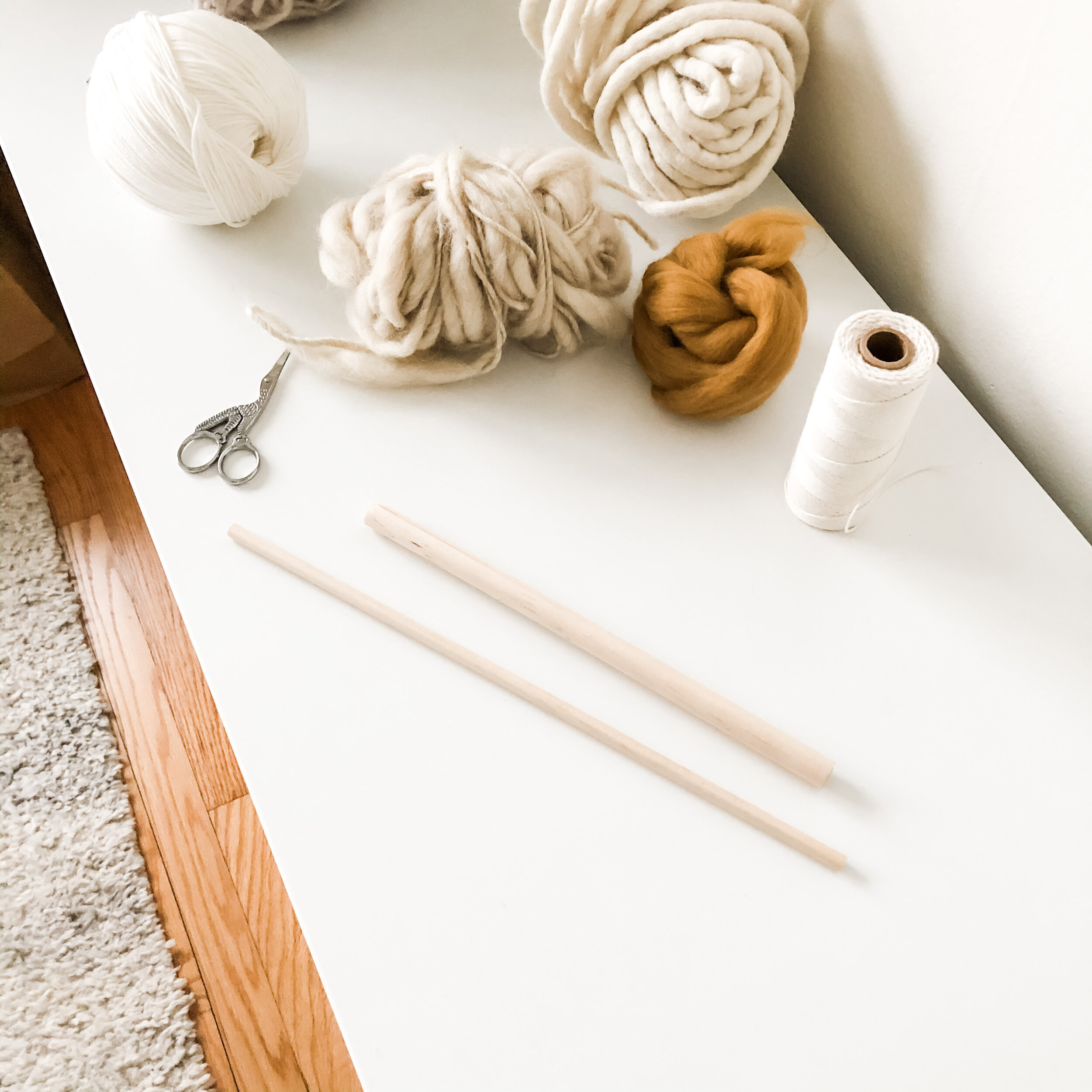what do you need to get started with tapestry weaving? \\
Hello! I am so excited you’re here and even more excited that you’re interested in trying weaving on a frame loom. This blog post will cover the basic materials and resources to get started with. These products are not at all sponsored - I only share the items I love!
What is tapestry weaving?
Tapestry weaving is a weft-faced type of weaving, where only one side (what we like to call the dark side) is visible in the finished piece. This is often why this type of weaving is used for decoration! The size of the tapestry is determined by the size of the frame loom. Tapestry weaving allows beginners to be able to test and learn new techniques with minimal up-front investment.
What do you need to get started with tapestry weaving?
Here are the basic materials:
Loom: there are all shapes, sizes, and variations. I recommend starting with a smaller lap-size frame loom. A few of my favorites:
Warping string: Warping string creates a foundation (vertical fibers) for your weaving. You’ll want something sturdy! I recommend a neutral color as a starting point. My favorite below is a 4-ply and is 100% cotton! On a smaller loom, one will last you a very long time (800yds!).
Yarn (weft):
Weft is the horizontal fibers that are woven in and out of the warp. This is where it gets fun! The amount and type of yarn you need will depend on the size and the design. To start, I’d say get yourself 3-5 different types of yarn in varying thicknesses (!!!) so you’re able to play around, but know that (1) skein of each color may last you a few weavings! Also- if you already love fiber and have some laying around at home, dip into that stash! All types and sizes will work. A few of my favorite yarn + string shops are:
Weaver House - use HOUSEWEAVING for 10% off your order (can only be used once)
I also provide ‘destash packs’ regularly in my Shop > Destash section of my website. Some are full skeins/balls and some are just smaller scraps! Perfect for those looking to create weavings with a lot of different types of fibers.
Basic tools:
The basic tools I would recommend getting before you start are below.
Tapestry Beater (not needed if you have a heddle bar). Tapestry Beaters are like combs for your weft!
Weaving Sword (not needed if you have a heddle bar). Weaving Swords save you time by changing the up-down position of warp threads! Make sure to get one that is a few inches+ wider than your loom.
Stick Shuttle(s) - I’d recommend starting with 2 (each fiber type will go on a separate one). Stick Shuttles “shuttle” the yarn through your warp.
Tapestry Needle - a necessity! I recommend a steel one at a minimum. If you’re wanting to invest in a wooden one, they actually save a bit more time because of their length.
Sketchbook + pen/pencil - I always encourage sketching or writing down some thoughts before starting. My all-time favorite sketchbook is below.
Dowels
Dowels are what the weavings will hang from when it is taken off the loom. It is easiest to insert the dowel on the top right after the loom is warped. You’ll want to choose a dowel that is a few inches wider than the width of your warp. 1/4” thickness is great for the size of weavings you’ll be able to create on the looms I recommended above.
Driftwood dowels: search Etsy- there are so many options!
— Also note that you can buy kits that contain everything you need! If you’re not wanting to pick and choose your individual materials, you can find kits from many makers. My favorites are this kit from Maryanne Moodie or this monochrome kit from The Woolery.
Where can I find online classes, workshops, or informative books to get started with?
Online Classes / Workshops
Maryanne Moodie - I am always quick to recommend MM because she is who I learned from! She has a wonderful way of teaching that leaves you feeling so excited to tackle any project.
h o u s e \\ w e a v i n g’s Instagram — I share how-to’s along with tips + tricks on my account.
Books
I hope this information helps you get started! If there are any questions, feel free to ask below in the Comments box.
